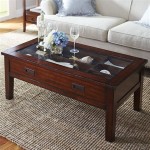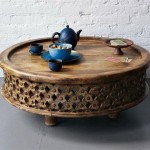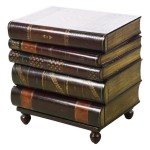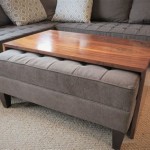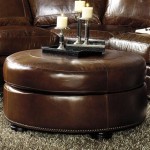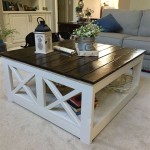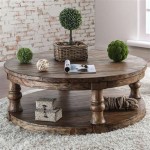The Multifaceted Benefits of Utilizing a Coffee Table for Dining
The coffee table, traditionally positioned as a central piece of furniture within living spaces, is often perceived primarily as a surface to hold beverages, reading materials, or decorative items. However, the utility of a coffee table extends beyond mere ornamentation and convenience; it can function as a practical and versatile dining surface, offering a range of benefits depending on lifestyle, space constraints, and individual preferences.
Rethinking the coffee table as a potential dining space can be particularly advantageous in various living arrangements. Small apartments, studio spaces, or homes designed with open-concept layouts often necessitate multifunctional furniture. In such environments, the coffee table, if properly selected and utilized, can effectively substitute a traditional dining table without significantly impacting the available space. Furthermore, the casual and relaxed atmosphere fostered by dining at a coffee table can contribute to a more comfortable and informal dining experience.
Space Optimization and Adaptability
One of the most compelling advantages of using a coffee table for dining lies in its ability to optimize space utilization, especially in homes with limited square footage. Traditional dining tables, while functional, can occupy a considerable area, often remaining unused for extended periods. A coffee table, on the other hand, typically occupies a smaller footprint and can serve multiple purposes, including dining, entertaining guests, or providing a surface for work or hobbies. This adaptability is particularly valuable in smaller living spaces where maximizing usable area is paramount.
Furthermore, the design of many modern coffee tables incorporates features that enhance their dining functionality. Lift-top coffee tables, for instance, are designed with a hinged surface that can be raised to a more comfortable dining height. This transforms the coffee table from a low surface suitable for drinks and snacks into a makeshift dining table appropriate for enjoying full meals. Storage compartments are frequently integrated within the unit, allowing for the convenient storage of dining essentials like placemats, napkins, or cutlery. Some coffee tables even feature extendable surfaces, providing additional dining space when needed and retracting when not in use.
The portability of certain coffee tables further contributes to their space-saving capabilities. Lightweight coffee tables or those equipped with casters can be easily moved to different locations within the room, allowing for flexible arrangement of the living space. This adaptability is especially useful when hosting guests or rearranging furniture to accommodate various activities.
Promoting Casual and Informal Dining
Utilizing a coffee table for dining can foster a more relaxed and informal dining atmosphere compared to the formality often associated with traditional dining rooms and tables. The lower height and proximity to the floor encourage a more casual posture, promoting a sense of ease and relaxation. This informal setting can be particularly appealing for casual meals, snacks, or intimate gatherings with close friends and family.
The absence of a formal dining table can also encourage a more relaxed approach to dining etiquette. While proper table manners should always be observed, the coffee table setting often allows for a more comfortable and less rigid dining experience. This can be particularly beneficial for individuals who feel intimidated or uncomfortable in formal dining environments.
Moreover, the coffee table's central location within the living room facilitates a more integrated dining experience. Guests can easily engage in conversation and interact with others while enjoying their meal, fostering a sense of togetherness and camaraderie. The proximity to entertainment systems, such as televisions or music players, further enhances the relaxed atmosphere and provides opportunities for shared entertainment during meals.
Cost-Effectiveness and Versatility
Investing in a high-quality coffee table that can serve as a dining surface can be a cost-effective alternative to purchasing a separate dining table, particularly for individuals or families who do not regularly host formal dinner parties. A well-chosen coffee table can fulfill multiple functions, serving as a surface for dining, working, and entertaining, thereby reducing the need for multiple pieces of furniture.
Additionally, the versatility of a coffee table allows it to adapt to various decorating styles and living arrangements. Coffee tables are available in a wide range of materials, shapes, sizes, and designs, enabling homeowners to select a piece that complements their existing decor and meets their specific needs. From sleek and modern designs to rustic and traditional styles, there is a coffee table to suit virtually any aesthetic preference.
The ability to repurpose a coffee table for dining can also be beneficial for individuals who frequently relocate. Rather than investing in a large and cumbersome dining table that may not be suitable for different living spaces, a coffee table provides a more flexible and adaptable solution that can be easily transported and integrated into various home environments.
Furthermore, cleaning and maintaining a coffee table used for dining is often simpler and less time-consuming compared to cleaning a full-sized dining table. The smaller surface area allows for quicker and more efficient cleaning, and many coffee tables are designed with materials that are resistant to stains and spills.
To maximize the benefits of using a coffee table for dining, several factors should be considered. The height of the coffee table is crucial for ensuring a comfortable dining posture. Ideally, the coffee table should be at a height that allows individuals to sit comfortably on the floor or on cushions without having to strain their neck or back. Lift-top coffee tables offer an adjustable height, providing a more ergonomic dining experience.
The size of the coffee table should also be appropriate for the number of people who will be dining regularly. A larger coffee table will provide more space for food, drinks, and place settings, while a smaller coffee table may be more suitable for individual use or for intimate gatherings. The shape of the coffee table can also influence its dining functionality. Rectangular or oval coffee tables generally provide more surface area for dining compared to round or square coffee tables.
The material of the coffee table should be durable and easy to clean. Wood, glass, and metal are all popular choices for coffee tables, each offering its own unique aesthetic and functional properties. Wood coffee tables are generally durable and resistant to scratches, while glass coffee tables are easy to clean and maintain. Metal coffee tables are known for their strength and durability.
The choice of seating is also an important consideration when using a coffee table for dining. Floor cushions, beanbag chairs, or low-profile seating options can provide a comfortable and relaxed dining experience. Alternatively, individuals can opt for small folding chairs or stools that can be easily stored when not in use. The seating arrangement should be comfortable and conducive to conversation and interaction.
Lighting can also play a significant role in creating a pleasant dining atmosphere at a coffee table. Soft, ambient lighting can enhance the relaxed and informal setting, while task lighting can provide adequate illumination for enjoying meals and engaging in conversation. Consider using floor lamps, table lamps, or string lights to create the desired ambiance.
Presentation is also key to creating a visually appealing and enjoyable dining experience at a coffee table. Use attractive placemats, napkins, and tableware to elevate the dining experience. Consider adding decorative elements such as candles, flowers, or small centerpieces to enhance the overall aesthetic.
In conclusion, while traditionally viewed as a supporting piece of furniture, the coffee table can function as a practical and beneficial dining surface. Its space-saving capabilities, ability to foster a casual and relaxed atmosphere, and cost-effectiveness make it a valuable asset in various living situations. By carefully considering factors such as height, size, material, seating, lighting, and presentation, individuals can create a comfortable and enjoyable dining experience at their coffee table.

Eating The Same Breakfast Everyday Improved My Mental Health

The Dash Diet A Complete Overview And Meal Plan

What Are The Healthiest Times To Eat Meals

Services Cheryl Buckley

Menu Transparency Uncovering The Health Advantages Of Calorie Information City Bridgeport

Family Dinner At The Table An Important Ritual With Proven Benefits

10 Ways To Easily Kick Processed Foods Out Of Your Diet

Noom Foods List Green Yellow Orange To Eat On Diet

How Can Hospitals Provide Self Service Healthy Food Options Onsite 24 7

How To Keep A Food Journal Instructions And Tips
Related Posts

